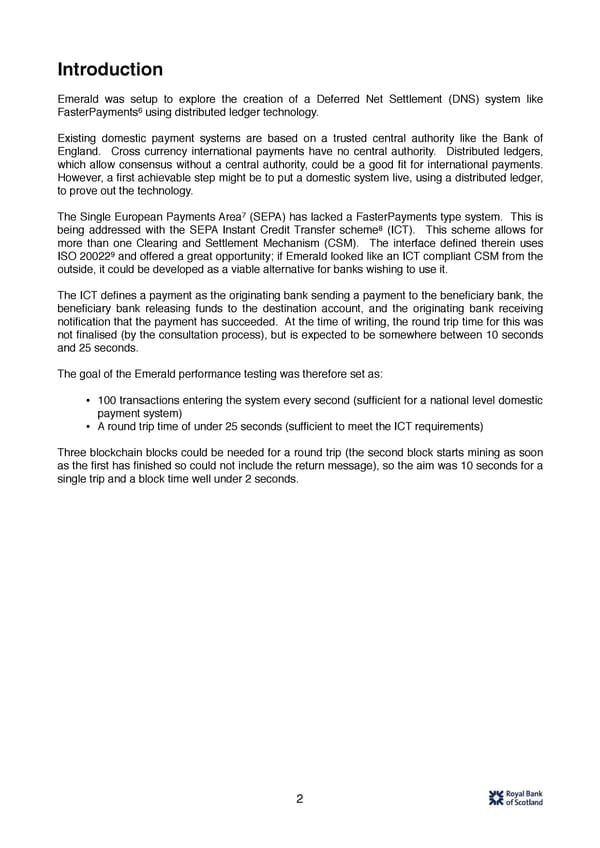Introduction Emerald was setup to explore the creation of a Deferred Net Settlement (DNS) system like FasterPayments6 using distributed ledger technology. Existing domestic payment systems are based on a trusted central authority like the Bank of England. Cross currency international payments have no central authority. Distributed ledgers, which allow consensus without a central authority, could be a good fit for international payments. However, a first achievable step might be to put a domestic system live, using a distributed ledger, to prove out the technology. The Single European Payments Area7 (SEPA) has lacked a FasterPayments type system. This is being addressed with the SEPA Instant Credit Transfer scheme8 (ICT). This scheme allows for more than one Clearing and Settlement Mechanism (CSM). The interface defined therein uses ISO 200229 and offered a great opportunity; if Emerald looked like an ICT compliant CSM from the outside, it could be developed as a viable alternative for banks wishing to use it. The ICT defines a payment as the originating bank sending a payment to the beneficiary bank, the beneficiary bank releasing funds to the destination account, and the originating bank receiving notification that the payment has succeeded. At the time of writing, the round trip time for this was not finalised (by the consultation process), but is expected to be somewhere between 10 seconds and 25 seconds. The goal of the Emerald performance testing was therefore set as: • 100 transactions entering the system every second (sufficient for a national level domestic payment system) • A round trip time of under 25 seconds (sufficient to meet the ICT requirements) Three blockchain blocks could be needed for a round trip (the second block starts mining as soon as the first has finished so could not include the return message), so the aim was 10 seconds for a single trip and a block time well under 2 seconds. 2
 Proving Ethereum for the Clearing Use Case Page 2 Page 4
Proving Ethereum for the Clearing Use Case Page 2 Page 4